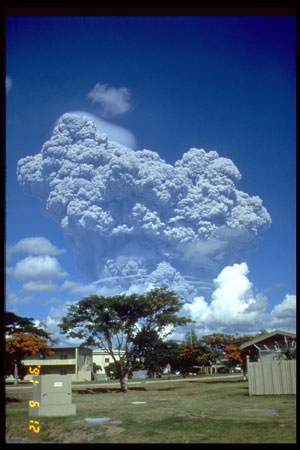Mount Pinatubo is an active stratovolcano on the island of Luzon in the Philippines, and the site of one of the most powerful recent eruptions. In June 1991, the volcano produced the second largest terrestrial eruption of the 20th century (after Novarupta), and the largest eruption in living memory. At least 800 people lost their lives in the eruption, but this was lower than it could have been because of an organized evacuation effort.
Pinatubo is located in the Cabusilan Mountain range, located on the west coast of the Island of Luzon. It’s a stratovolcano made up of successive layers of andesite and dacite. Its richly forested slopes were home to several thousand indigenous people. Before the eruption, it rose to an elevation of 1745 meters, but now it’s only 1485 meters tall.
Scientists had many warnings that Pinatubo was about to erupt, and this allowed such a thorough evacuation. On July 16, 1990, a magnitude 7.8 earthquake struck about 100 km north of Pinatubo. And then in March/April 1991, molten rock was detected rising to the surface from more than 32 kilometers beneath Pinatubo. This triggered more small earthquakes through April, May and early June.
On June 12, 1991, millions of cubic meters of magma reached the surface, beginning several days of eruptions. Even more magma reached the surface on June 15th, ejecting more than 5 cubic kilometers of material. An ash cloud rose 35 kilometers into the air, covering the surrounding region in meters of ash. Dangerous pyroclastic flows of hot ash, rock and water surged down the sides of the volcano, destroying everything in their path. The huge eruption gouged out a caldera 2.5 km across.
The eruption was so significant that the ash darkened the atmosphere, and caused worldwide temperatures to drop by 0.5 degrees C.
We have written many articles about volcanoes for Universe Today. Here’s an article about Mount St. Helens, and here’s an article about Krakatoa.
Want more resources on the Earth? Here’s a link to NASA’s Human Spaceflight page, and here’s NASA’s Visible Earth.
We have also recorded an episode of Astronomy Cast about Earth, as part of our tour through the Solar System – Episode 51: Earth.

